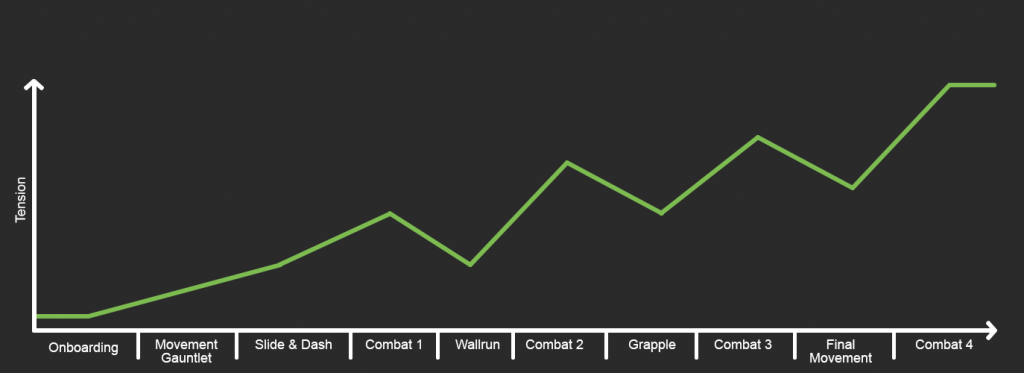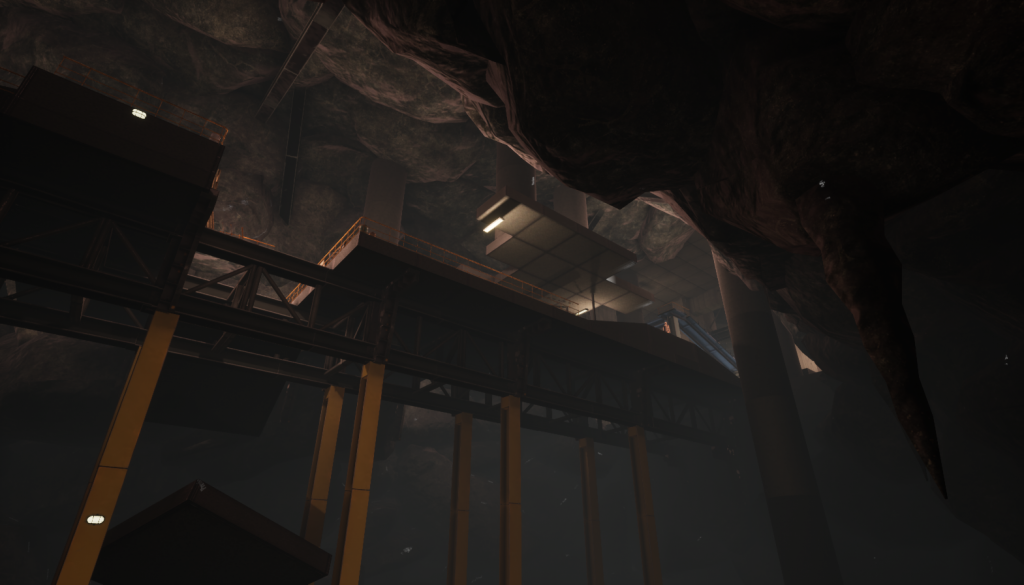A.R.D. – Alien Removal Division
Action Shooter | Unreal Engine 4 | September 2021 – June 2022
25 Person Team | BUAS Best Design 2022
More Content Below
Summary
A.R.D. is a fast-paced single player fps where the player fights aliens and completes movement challenges while making their way through area 51.
The game won the 2022’s award for best design at Breda University of Applied Sciences.
About A.R.D.
- Singleplayer Linear Experience
- Fast Paced First-Person Combat
- Extensive Movement Abilities
Project Responsibilities
- Creating the final movement level.
- Creating the fourth combat encounter level.
- Set dressing various sections of the game.
- Playtesting the game with players.
- Planning the game’s overall experience.
- Setting level design rules and guidelines.
- Setting the level’s goals and requirements.
Final Movement Section
The final movement section is as the name implies the final test of the players movement abilities in the game.
The level has rotating walls that move up and down as it’s unique feature, the player must make use of them by wall running on them in order to progress. The main chamber also has rising water adding time pressure to the challenge.
As it’s the final movement challenge I wanted all the movement mechanics to be used at one point. Balancing this and not overwhelming the player all while dealing with a new scripted level element didn’t prove easy. A lot of iterations had to happen to make the level play well. But part of why I did this is because I wanted to challenge myself so I knew what I was getting into.


Level Design Management
Tension Graph

Modular Asset Kit
Experience Planing
I was responsible for planning out the level structure we would use, the overall experience, setting the pacing, deciding how many areas we would need, and what part of the game would need to house what, and in which order they would play out.
I planned out the tension the player would go through, determined how many of what type of room we would need based on our gameplay loop, I also adjusted this planning based on the production of our game and how many team members we had access to as this fluctuated within the project timeline.

I deemed a linear level structure to both suit intended experience, and our team’s scope the best.
SET DRESSING
Worked together with environment art for set dressing and modelling. And eventually due to lack of manpower also managed the set dressing the level designers had to do.
I split up levels into multiple parts and assigned people in strike groups who would work on different parts of the same level, working together while doing so, this to ensure consistency.
All pictures shown are scenes which I set dressed.
Post-Mortem
There are a bunch of things I would have done differently would I have worked on the project today.
The main problem the game’s production had was the development of the A.I. The speed at which it was developed hampered the designing of levels which resulted in a lot of time issues with the levels not being finished in time. The most problematic was the small amount of time left for iterations which lowered the quality of the levels. There was also another combat encounter that was planned that was scrapped because there wasn’t any more time left towards the end of production. If we were to redo the project I would have spend more time finding ways to work around these issues instead of waiting until the last moment. For the final movement level I would have reworked some parts of the level to be less angular, as it made it a lot more harder to set dress and to justify the environment.



